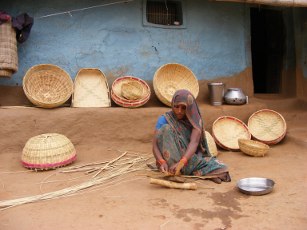
Rationale
Poor households, especially in remote regions, need an array of essential social services. These include health and nutritional services, educational and training resources, access to economic opportunity, and essential infrastructure such as electricity, water, roads, telecommunications and access to markets. Also needed are appropriate technologies enabling full participation in the global society; social equality and justice; and broad based freedom of thought and expression. These are all recognized as needs of any progressive society.
When asked to identify the one service that they would pick as their most immediate need, they overwhelmingly refer to livelihood opportunity. This is not to downplay the need for the other services - they are all important in their own right, particularly so since they feed into one another. But economic gain, in an environment of impoverishment, serves to offer some immediate capacity to address the most pressing needs of the household.
Our strategy accordingly is to enter into the community with economic services, such as microfinance or more in-depth livelihood interventions. Through this economic engagement, we establish relationships of trust that set the stage for next stage social interventions that need far greater engagement, such as nutritional programs, health education and functional literacy.
Architecture
Our service model applies a tiered framework. At the base of this framework is a foundation of Core Values & Principles. We serve only the poor or otherwise weaker sections of society, and adhere closely to mechanisms such as the Samhita Poverty Assessment Score to limit possibility of mission drift. The groups served by network member institutions include women, the aged, the handicapped, children, the economically poor and the socially depressed. The driving motivation behind all our activity is the increased welfare of the community, and we emphasize service delivery with professionalism, innovation, scale, depth, sustainability and equity.
Over this foundation of values, we apply a technology framework which we have labelled our Common Appropriate Technology PlatformTM. Built upon free and open source technologies, the platform pertains to three types of technologies - software, engineering and social - and is applied for the development of enterprise, mobile and community solutions. The platform is designed to allow seamless information sharing across the range of multi-disciplinary service offerings.
The next tier relates to the application of our Common Management Platform. Our various institutions share common management philosophies, systems, processes and shared support teams, just as we share technology and physical infrastructure across our different programs. We are driven to apply best practices and innovate across all management functions.
Finally, at the head of this framework lie the Samhita Service Programs. Individual service institutions specialize in providing one among economic, health, educational, environmental and technology service offerings. They leverage off the underlying support components of the framework, while coordinating seamlessly with other service providers in presenting a universal, complete solution to the community.